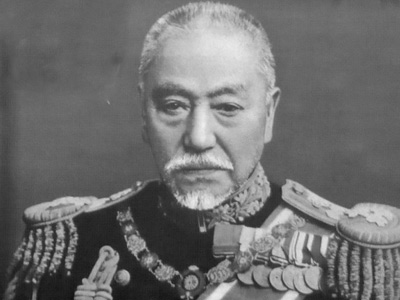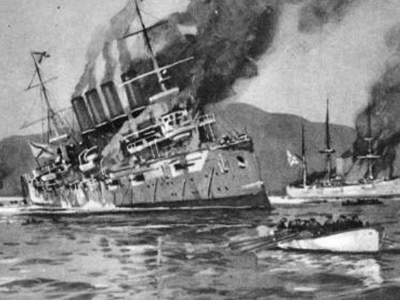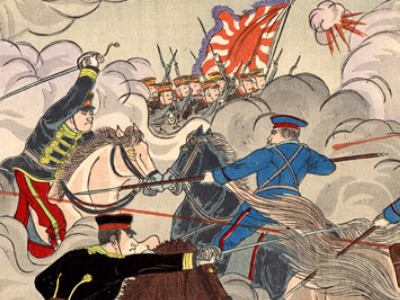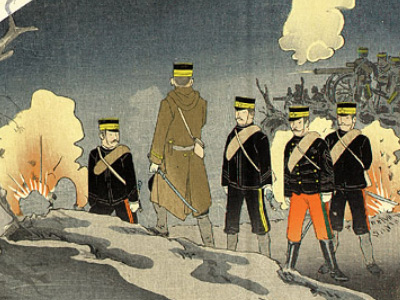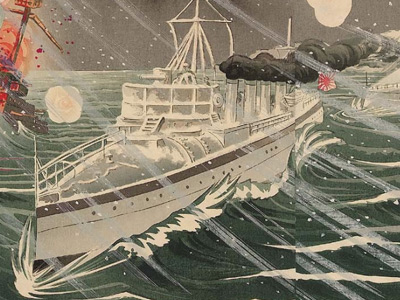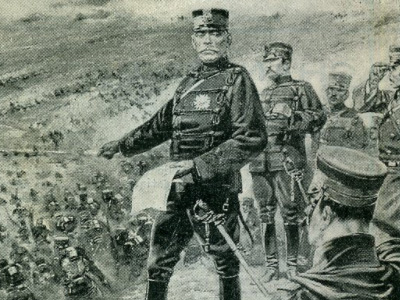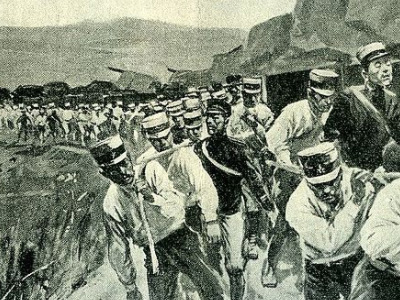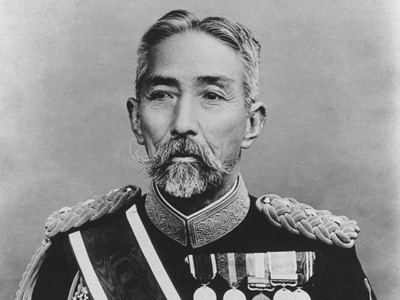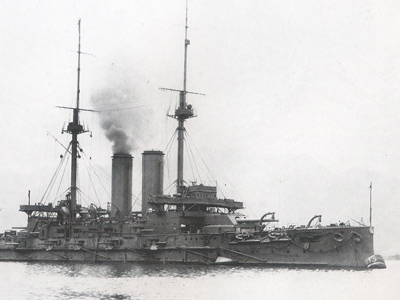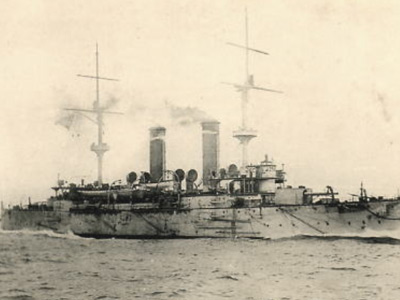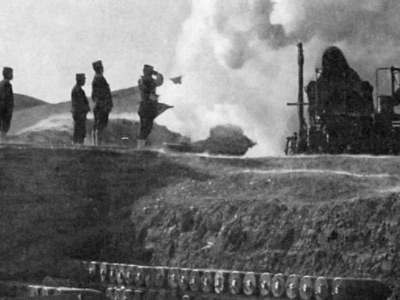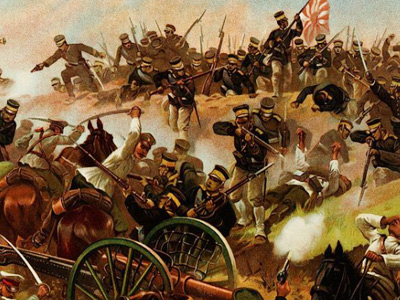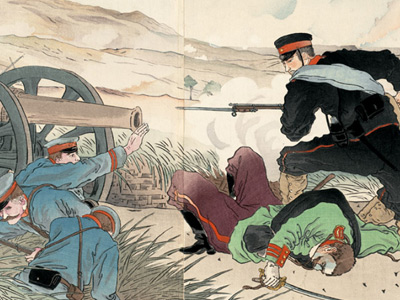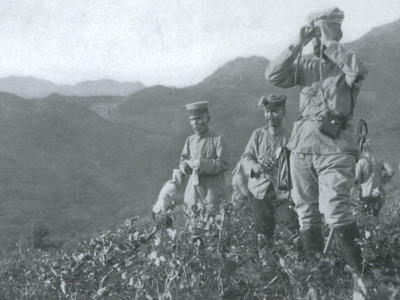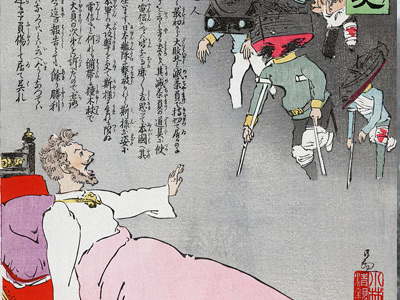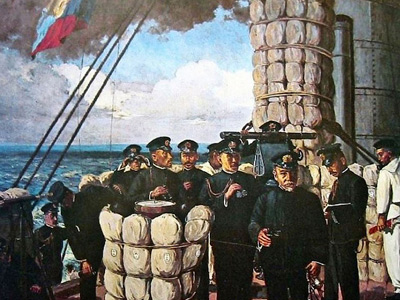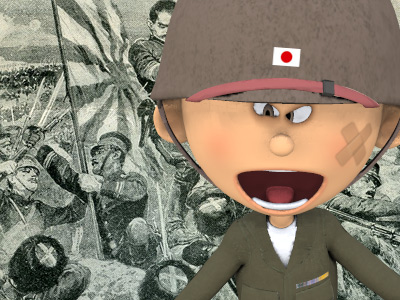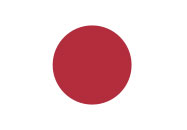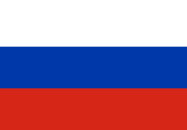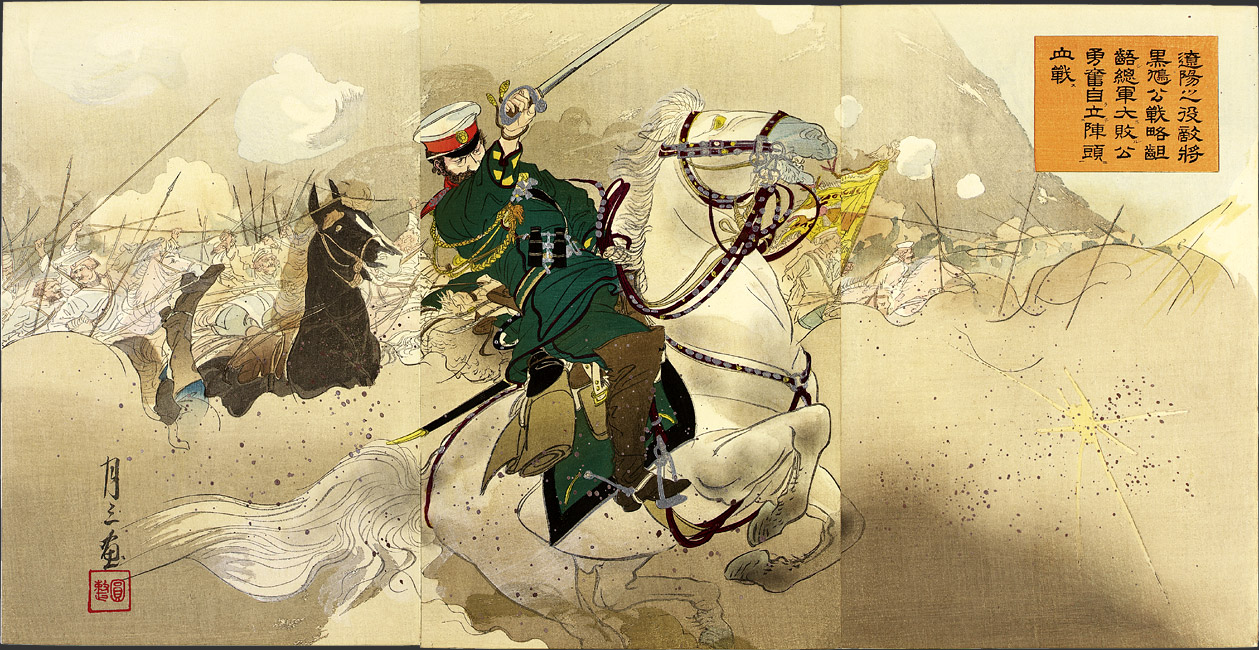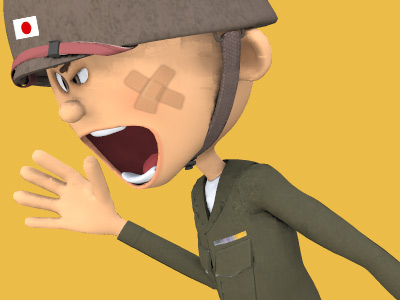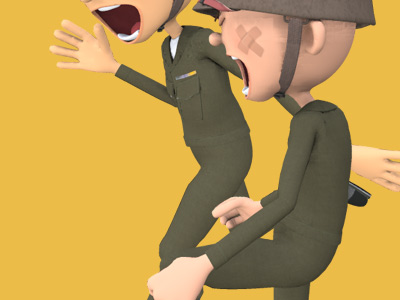Russo-Japanese War (1904–1905)
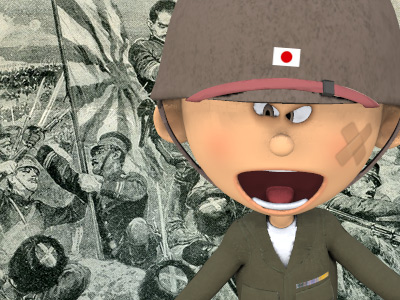
Battle of Yalu River
The Battle of Yalu River lasted from 30 April to 1 May 1904, and was the first major land battle during the Russo-Japanese War. It was fought near Wiju (modern village of Uiju, North Korea) on the lower reaches of the Yalu River, on the border between Korea and China.
The Russian Situation
The strategy of the Russian Russian Empire was an empire and the final period of the Russian monarchy from 1721 to 1917, ruling across large parts of Eurasia. The rise of the Russian Empire coincided with the decline of neighbouring rival powers: the Swedish Empire, the Polish–Lithuanian Commonwealth, Qajar Iran, the Ottoman Empire, and Qing China. Russia remains the third-largest empire in history, surpassed only by the British Empire and the Mongol Empire. commander in the Far East, General Alexei Kuropatkin was to conduct stalling action, while waiting for enough reinforcements to be brought up to the front via the single-track Trans-Siberian Railway to take the offensive. He estimated that it would take at least 6 months to build his forces up to suitable levels. He also had received strict orders not to hinder the Japanese progress through Korea from Viceroy Yevgeni Alekseyev, but to hold the line at the Yalu River to prevent the Japanese from crossing into Manchuria.
Russian Empire was an empire and the final period of the Russian monarchy from 1721 to 1917, ruling across large parts of Eurasia. The rise of the Russian Empire coincided with the decline of neighbouring rival powers: the Swedish Empire, the Polish–Lithuanian Commonwealth, Qajar Iran, the Ottoman Empire, and Qing China. Russia remains the third-largest empire in history, surpassed only by the British Empire and the Mongol Empire. commander in the Far East, General Alexei Kuropatkin was to conduct stalling action, while waiting for enough reinforcements to be brought up to the front via the single-track Trans-Siberian Railway to take the offensive. He estimated that it would take at least 6 months to build his forces up to suitable levels. He also had received strict orders not to hinder the Japanese progress through Korea from Viceroy Yevgeni Alekseyev, but to hold the line at the Yalu River to prevent the Japanese from crossing into Manchuria.
On 22 April 1904, Kuropatkin dispatched the "Eastern Detachment" under the command of Lieutenant-General Mikhail Zasulich with 16,000 infantry, 5,000 cavalry and some 62 artillery pieces to fight a static delaying action at the north bank of the river. However, this force was spread out piecemeal over a 170-mile front, whereas the Japanese Army could concentrate its efforts on any single point of its choosing. Furthermore, General Zasulich did not hold the Japanese in a very high regard. Most of the Russian forces were deployed near Wiju, blocking the main road from Korea to Manchuria. Small detachments guarded the bank up and down the river.
The Japanese Situation
After the success of the Imperial Japanese Navy at the Battle of Chemulpo Bay on 9 February 1904, the way was clear for the Imperial Japanese Army to deploy the 2nd, the 12th, and the Guards Divisions of the Japanese 1st Army, commanded by Major-General Baron Tamemoto Kuroki, into Korea. The total strength of Japanese force was about 42,500 men. The Japanese 1st Army advanced quickly northwards from Chemulpo (modern Incheon), with advance units entering Pyongyang on 21 February 1904 and Anju by 18 March 1904. Learning their lessons in logistics and transport from the Sino-Japanese War, the Japanese army hired some 10,000 local laborers at wages well above the local norms, and paid also for any food and supplies procured locally. This contrasted greatly with the behavior of the Russian troops previously in northern Korea.
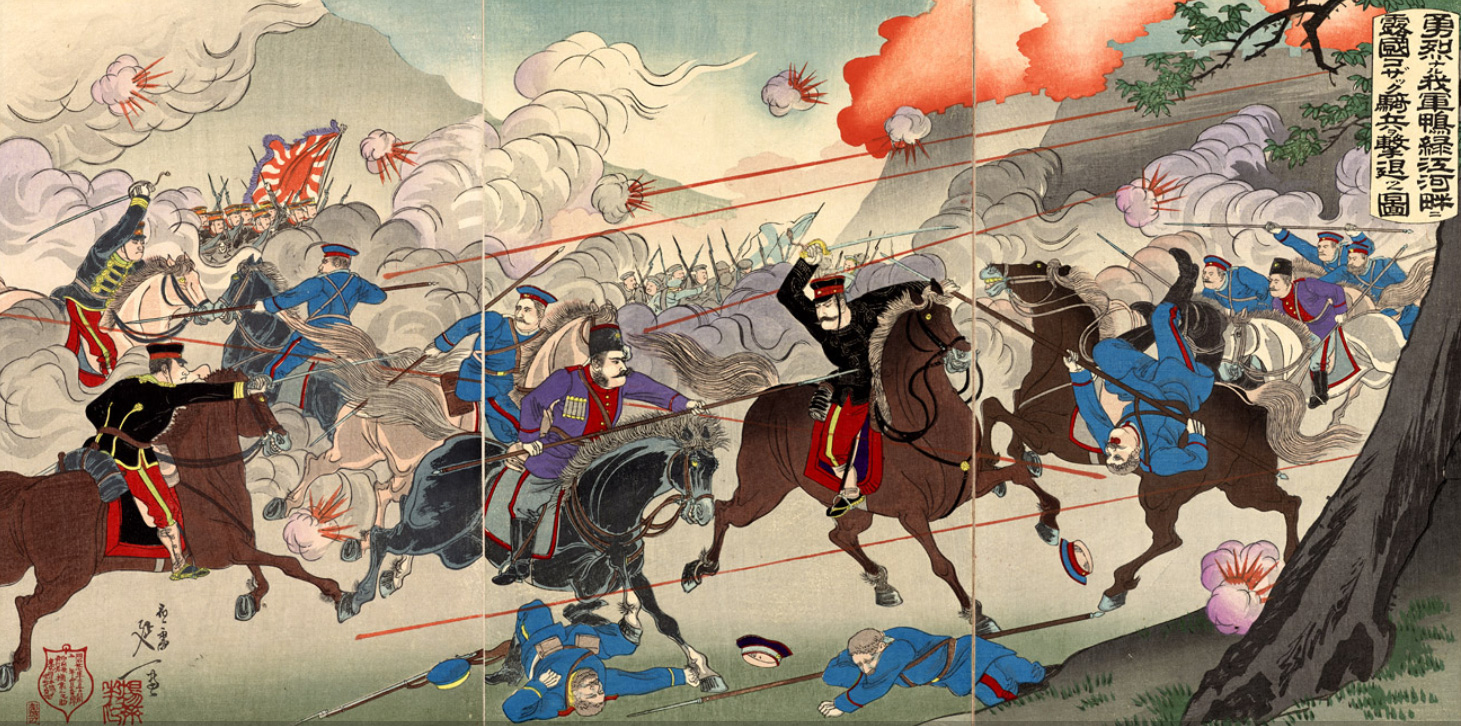
Picture of Our Valorous Military Repulsing the Russian Cossack Cavalry on the Bank of the Yalu River by Watanabe Nobukazu (1874–1944), March 1904

Picture of Our Valorous Military Repulsing the Russian Cossack Cavalry on the Bank of the Yalu River by Watanabe Nobukazu (1874–1944), March 1904
( Click image to enlarge)
By seizing the port of Chinampo (modern Nampo, North Korea) at the mouth of the Taedong River outside of Pyongyang with the spring thaw, the Japanese were able to land the remaining components of the 1st Army by 29 March.
By 21 April 1904 the Japanese 1st Army was concentrated and hidden south of Wiju. The Japanese were in the same positions on the southern bank of the Yalu River that they had been in August 1894. The Japanese knew the exact locations of the Russians' deployment from intelligence by forward scouts disguised as Korean fishermen, the Russians made no effort to conceal their positions. By 23 April, the Japanese knew the layout the Russian trench line and details of the defensive positions around the area of Antung. Intelligence was so effective that the Japanese estimate of the Russian troop strength was only exceeded by 1000 and the estimate of the guns which was only two less than the actual number. The Japanese made every effort to keep their positions hidden. Screens of trees, millet and bushes were used to conceal activity as well as roads, artillery and other equipment.
Prelude
The prelude to major action took place at 21:45 (9:45 P.M.) on the night of 25 April 1904, when two battalions of the Japanese 2nd Division seized two islands in the Yalu River without opposition. After reinforcement at 0400 on 26 April by units from the Guards Division and a brief firefight, the forward Russian observation post withdrew to the main Russian lines on the north shore.
Japanese engineers determined that ten bridges 1,630 yards (1490.5m) would be required to span the river. A third of these were steel prefabricated pontoons which weighed 100 pounds each. The remainder were made from local resources. In full view of Russian positions, the Japanese began constructing a causeway across the Yalu River, which was immediately targeted by two Russian batteries. With the Russians so engaged, the Japanese prepared nine other bridges that could quickly be moved into position for a rapid assault across the river at other locations.
Once the midstream islands were secured, General Kuroki ordered a feint on the lower Yalu River when Japanese gunboats engaged Cossack detachments at the river mouth. This convinced General Zasulich that the main Japanese attack would fall on the vicinity of the town of Antung, and he concentrated his forces there.
Kuroki was thus able to maneuver against the weak Russian left, and deployed the 12th Division and Guards Division across the Yalu River at a fordable point. The Russians observed these movements with trepidation, and General Kashtalinsky informed General Zasulich that the Japanese were about to assault the position in force and his position was in danger of being flanked. Zasulich chose to ignore the reports, thinking that the attack was only a feint, and redeployed a single battalion with four guns. Zasulitch remained convinced that the main Japanese attack would fall at Antung, and kept his main force as well as his reserves at that location.
The Main Battle
The Japanese main attack began in the early morning hours of 27 April 1904. By 0300, the balance of the 12th Division had crossed the river and was advancing in three columns. While the Japanese 12th Division advanced on the right, the Guards Division was moving into position in the center. By 0400, the artillery of the Guards Division was within range of the exposed Russian lines. The Japanese First Army continued its three-pronged advance and was across the Yalu by midnight of 29 April 1904 with very little opposition. Limited visibility masked the Japanese movements from Russian observation. When the fog finally lifted about 0500, the Japanese artillery opened up on the Russian formations.
The 2nd Division took its position on the center, advancing on the newly erected causeways leading from the town of Wiju and thus catching the Russians in a pincer movement at the hamlet of Chuliengcheng, on the Manchurian-side of the Yalu River opposite Wiju. By 1000, the Russians were in full retreat, with a Japanese attempt to block their escape towards Fenghuangcheng to the north.
The Japanese had a number of 4.7 inch howitzers, custom-made by Krupp, which they used with devastating effect on the exposed Russians. In light of these developments, General Zasulitch was strongly encouraged by his staff to pull back to a more defensible position. However, the general stubbornly refused to concede, even sending a telegram to Tsar Nicholas II in Saint Petersburg informing that victory was soon certain. He chose to ignore General Kuropatkin's phased withdrawal orders (as confirmed by Kuropatkin's chief of staff, General V.V. Sakarov).
General Kuroki had planned to continue the advance of the 12th Division to envelope the Russian left. However, now that the enemy artillery had been neutralized, he decided to engage the Guards and the 2nd Division in a simultaneous assault. It was at this point the Japanese encountered the first serious resistance from the Russian lines. The advance of the 2nd Division was disrupted for a time, and had any of the Russian artillery survived, the outcome might have been different. The Russians were driven from their trenches with severe losses, and the survivors fell back to the tops of the hills, the position that Zasulitch's advisors had unsuccessfully encouraged him to fall back to earlier. During the retreat, a counterattack was made by elements of the Russian 12th East Siberian Rifle Regiment, which was cut to pieces and opened further the breaks in the Russian lines.
The Russian position now became wholly untenable, and remaining formations now were in danger of being encircled. General Zasulich was ordered to retreat. The 11th East Siberian Rifle Regiment, which was covering a retreat, was cut off by the Japanese and suffered large casualties during its breakthrough back to the other Russian forces. At the appearance of the Japanese 12th Division, the Russian left flank panicked and collapsed.
At 1730 on 1 May 1904, remnants of the Russian Eastern Detachment either surrendered or escaped towards Fenghuangcheng to the north and the Battle for the Yalu River came to an end.
Outcome
The Battle of the Yalu River ended in victory for Japan The Empire of Japan, also known as the Japanese Empire or Imperial Japan, was a historical nation-state and great power that existed from the Meiji Restoration in 1868 until the enactment of the post-World War II 1947 constitution and subsequent formation of modern Japan. Economic and political turmoil in the 1920s led to the rise of militarism, nationalism and totalitarianism eventually culminating in Japan's membership in the Axis alliance. . The combat had cost the Japanese 1036 dead and wounded out of the total 1st Army strength of 42,500. The Russian Eastern Detachment suffered some 2700 casualties overall, including about 500 killed, 1000 wounded, 600 prisoners and the loss of 21 of 24 field guns.
The Empire of Japan, also known as the Japanese Empire or Imperial Japan, was a historical nation-state and great power that existed from the Meiji Restoration in 1868 until the enactment of the post-World War II 1947 constitution and subsequent formation of modern Japan. Economic and political turmoil in the 1920s led to the rise of militarism, nationalism and totalitarianism eventually culminating in Japan's membership in the Axis alliance. . The combat had cost the Japanese 1036 dead and wounded out of the total 1st Army strength of 42,500. The Russian Eastern Detachment suffered some 2700 casualties overall, including about 500 killed, 1000 wounded, 600 prisoners and the loss of 21 of 24 field guns.
Importance
The Battle of the Yalu River was the first major land campaign of the Russo-Japanese War. The defeat of the Russian Eastern Detachment removed the perception that the Japanese would be an easy enemy, that the war would be short, and that Russia would be the overwhelming victor.
HISTORY
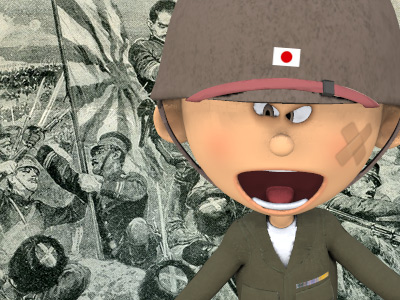
RESOURCES
This article uses material from the Wikipedia articles "Russo-Japanese War" and "Battle of Yalu River", which is released under the Creative Commons Attribution-Share-Alike License 3.0.
© Stories Preschool. All Rights Reserved.
